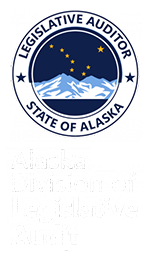| SUMMARY OF: | A Special Report on the University of Alaska, Unit Cost Analysis and Other Selected Issues, Part 1, August 12, 2005. |
Purpose of the Report
In accordance with Title 24 of the Alaska Statutes and a special request by the Legislative Budget and Audit Committee, we were to perform a cost analysis of the University of Alaska (UA or University) FY 04 expenditures by academic unit and housing complex. We were also to evaluate the degree of resolution of findings identified in the University of Alaska, Unit Cost Analysis and Selected Operational Aspects, November 15, 1993, Audit Control Number 45-4448-94.
Further, we were to determine if the University was maximizing the use of distance education technologies and was making travel arrangements in the most cost-effective manner. Maximizing the use of distance education technologies and the arrangement of travel in a cost-effective manner will be addressed at a later date under separate report cover.
Report Conclusions
This audit presents expenditures, revenue, and other cost information for the three main campuses—University of Alaska Anchorage (UAA), University of Alaska Fairbanks (UAF), and University of Alaska Southeast (UAS)—small campuses, and Statewide administration. Further, in the appendices of the report, costs are categorized in functional categories by college, school, small campus, research institute, or public service organization. These presentations compute cost per credit hour, cost per full-time equivalent student, and credit hours per faculty. This report also provides an analysis of housing financial and occupancy information, evaluates housing revenues collected in the summertime, and addresses the status of recommendations of the prior audit.
Some of the observations and conclusions in this report are:
- UAF has the largest percentage of total University expenditures, while UAA has the largest percentage of instructional costs.
- The State’s General Fund is the largest single source of funds. Also, UA received almost $134 million (27%) in federal funding in FY 04, primarily related to research conducted at UAF. Tuition and fees account for $67 million (14%) of the total FY 04 revenue.
- UAA has the highest number of credit hours and lowest cost per credit hour. Graphs compare the costs for UAA, UAF, UAS, and the combined small campuses, presented on both a credit-hour and per-student basis.
- UA expenditures for research and administration exceed national averages. UA exceeds the national average in research, student services, operations and maintenance, and administration, while spending less than the national average on all instruction, public service, and student aid.
- In FY 04, UA housing revenues exceeded operating expenditures. In FY 04, University housing, in total, collected nearly $2 million more in revenue than its operating expenditures. When considering debt service, UA’s almost $2 million operating surplus is reduced to just over a $290,000 deficit.
- UAA seeks to maximize summertime guest revenues. The three main campuses have different eligibility requirements for individuals allowed to stay in campus housing in the summertime.
- The University has either resolved or made significant progress on the prior five audit recommendations.
Findings and Recommendations
- University chancellors should improve enforcement of policies and procedures relating to faculty evaluations, sabbaticals, and faculty overloads and additional assignments. During our review of faculty evaluations, sabbaticals, overloads and additional assignments, we noted several weaknesses, specifically:
- The tracking, monitoring, and compliance of faculty evaluations and supporting documents require improvement.
- Procedures should be adopted to address late sabbatical reports.
- Payment for faculty overloads and additional assignments should not be allowed without a signed agreement.
- The vice chancellors of administrative services should continue to improve accounting for auxiliary services. More precise and consistent recording of financial activity related to housing services will ensure management has the best information to make knowledgeable decisions.
- UAF vice chancellors for administrative services should pursue opportunities to increase revenues in order to accommodate debt service requirements and/or future construction needs.

